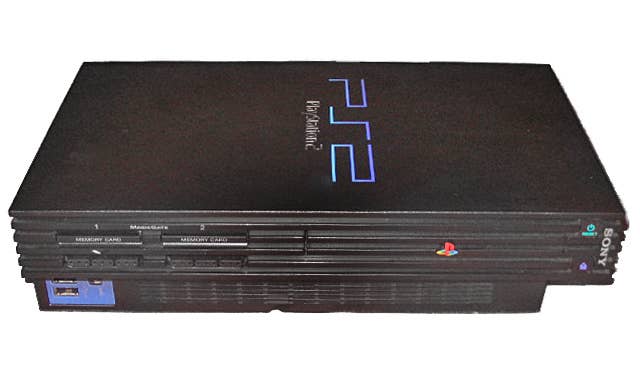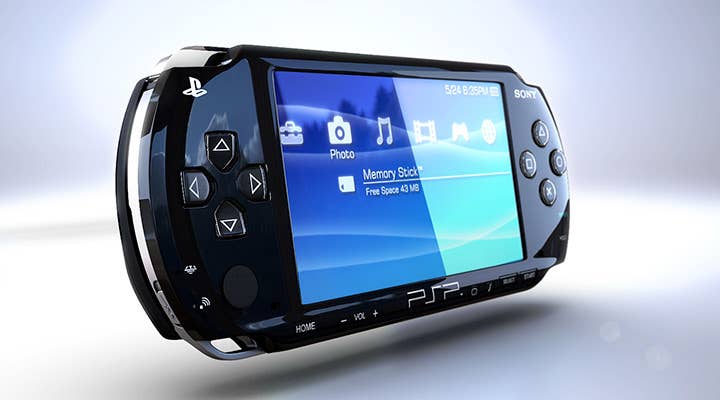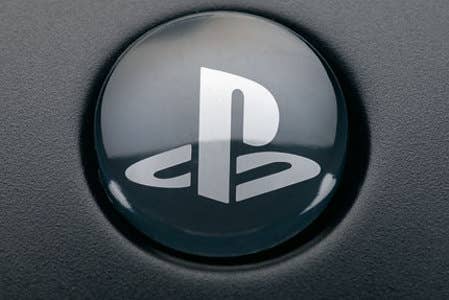The Rise and Fall of Sony - Part 1
Industry veteran and former Sony executive Richard Browne delves into Sony's video game history and asks, "Can they rise again?"
I have to preface this article by noting that I have long term ties to Sony. I was an employee of Psygnosis when Sony bought the Liverpool company back in the early '90s. Because of this tie I've been a long time supporter of Sony, and some have even deemed me a fanboy, which to some extent I probably am, or was. You'll forgive me if any of that comes out here.
Pre-Playstation
Sony's rise to prominence in the gaming business began in the early '90s when they entered into an agreement with Nintendo to produce a CD-Rom drive for the Super Nintendo. At the time I was working at Psygnosis, and as pioneers in the CD-Rom field we were early into discussions around the format. Psygnosis was working very quietly on a Star Wars CD game with Lucasarts; it was in its formative stages but the work the company had done with CD technology to date put them in good stead (alas, the contract to do the game would never get signed). When the SNES CD drive became a possibility, Psygnosis started working with DMA Design in Dundee (who had been highly successful partners from Menace to Blood Money to the infamous Lemmings) to try and emulate how the system would work.
By CES of January 1992 DMA had an emulated demo of the Star Wars game running on a SNES with a mega-cartridge dropped on top of it to simulate the CD drive and some aspect of its immense capacity. The demo was pretty spectacular, as was the falling out that Sony and Nintendo subsequently had over how their business relationship would work. As history will report, Nintendo ditched the concept of CDs and Sony went to work on building their own games console to take on its formerly proposed partner.
"The real genius of the PlayStation was its marketing. Sony realized that people who played games were growing up; it wasn't just a kids-focused business anymore"
Psygnosis and Sony had started business dealings in other parts of their respective organizations, in Sony's case through Imagesoft. Psygnosis worked on a number of titles through this relationship - Bram Stoker's Dracula, The Last Action Hero (in which Arnold Schwarzenegger was infamously not allowed to be seen holding guns), and Mickey Mania with Traveller's Tales to name just a few - but it was when Sony decided to enter the hardware business that the relationship became more formal.
PlayStation
Sony Computer Entertainment Europe was just one bloke - one Phil Harrison - but clearly Sony understood it would need more than just Phil on the ground to build a console division. With that in mind, and with other potential suitors waiting in the wings, Sony made the decision to purchase Psygnosis and put its joint MDs Jonathan Ellis and Ian Hetherington in charge of the new-found company. Initially, SCEE was set up to be a Publisher; rather smartly Sony realized that to sell hardware it would need a sales and distribution channel and with Psygnosis as a basis they could build and grow just that. For several months Phil would travel up to Liverpool for the week to work at our offices though in time Ian and Jonathan would open Sony's first London base on Golden Square from which the Company would work. SCEE began releasing a slate of cartridge games across Europe and the infrastructure began to grow.

In the meantime Sony Japan had been hard at work creating the PSX as it was well known, and relatively early on in its life a prototype appeared amongst much secrecy in Liverpool. When people refer to that first machine as a photocopier they really aren't exaggerating overly. It was large, noisy and ran very hot. Nothing ever changes with prototype hardware it seems. The Advanced Technology Group at Psygnosis (of which I was part) started to try playing with it immediately before running into what could only be described as a slight problem.
The only way to program the system was through NeXT workstations. We didn't have any. In fact most of us had never even heard of them. Through some pioneering research one of the team found two existed in England, at a Sony dealership in Basingstoke. They were quickly dispatched to the Psygnosis offices so the team could actually start to figure the machine out. What was clear though was this was going to be a problem, there was no way this machine was going to go mainstream if the programming toolset for it was almost impossible to acquire.
Fortune sometimes smiles and fate sometimes pulls through. Not long before the whole Sony Psygnosis marriage occurred we'd been looking to sign up the best and the brightest 3rd party developers in the UK. Andrew Spencer was one such man we signed up, we worked with Archer McLean on Super Dropzone, and I'd been in touch with the guys at the Assembly Line because I had been incredibly impressed with their work on Xenon 2 - and Adrian Stephens was working on this amazing Stunt Island game with Disney.
When Adrian, Andy Beveridge and Martin Day came up for a meeting in Liverpool discussions actually turned in an unexpected way. Andy and Martin has worked on SNASM, which was the de facto development kit for 16-bit machines at the time but wanted to redefine it and improve on it and had plans in place to do so. What they didn't have was funding and distribution for it, and Ian seeing the opportunity open up decided that it would be good for Psygnosis to get involved. Not long after Psy-Q appeared on the scene as the new 16-bit development kit; it was the best of its kind, priced very competitively and people started bit by bit to switch over to this new system. Thus the NeXT workstation issue became very solvable; get SN Systems involved and get a development environment up and running through a PC ASAP.
"Arguably the PlayStation launch was the most successful in console history... the PlayStation was a lifestyle choice and one that people embraced"
It was with much apprehension that Andy, Martin and David Worrall took the fledging system to CES the following January to show it to Ken Kutaragi. They needn't have worried; all was understood, SN Systems would provide the development kits and Western developers could get working on it ASAP.
Along with Phil I helped assemble the very first PSX development conference at Sony's new offices on Great Marlborough Street. The offices were so new that the floor was actually laid the day before the conference was due to take place. Conference might actually be somewhat of a overstated word; what actually happened is the best and brightest of Europe's developers were herded into a room and shown running demos on the PSX for the very first time. Anyone who was anyone in the UK games business was there that day - with one exception, Rare. They were invited but the Stamper brothers quite politely declined due to their relationship with Nintendo.
Leaked demos of the dinosaur head had been seen either animated or statically but when the full model dinosaur demo booted for the first time in that room you could have heard a pin drop, before the crashing sound of jaws dropping followed thereafter. Looking back on it now, it's somewhat amusing, but given the time and the place it's important to remember there were few people who were working in 3D at the time, and really nobody had tried it much on console and with textures and point and colored lighting. The room was blown away with what the machine could do; it was a sight to behold. I don't think anybody left the room that day without asking when they could get a kit; the development community was completely onboard and great software would therefore be forthcoming.
The real genius of the PlayStation was its marketing. Sony realized that people who played games were growing up; it wasn't just a kids-focused business anymore. They realized that gaming could become a lifestyle. With CD as the base technology there was so much that could be done storage wise, and it could play your music to boot! It could be the hub of entertainment, the life of the party. All this and more they marketed through incredibly targeted campaigns, lifestyle alliances, celebrity partnerships... arguably the PlayStation launch was the most successful in console history. Sony came from nowhere to completely trouncing the opposition. Sega and Nintendo tried to react but even with the pedigree advantages that they had on the software front the PlayStation was a lifestyle choice and one that people embraced.
For Europe, Psygnosis's Wipeout was the epitome of the brand, technically brilliant, Designer Republic futuristic design work, and a killer CD soundtrack that strangely featured almost no Sony Music artists whatsoever. Sony Computer Entertainment was a start up, the young pretender, even within the Corporation. Nobody foresaw how strong the PlayStation would become, Sony Music as much as anyone. Instead of giving their Corporate partners a nice favorable deal they treated SCEE like any other outsider wanting a license to their catalogue; as such, Psygnosis went with tracks from other labels with more favorable deals. Ironically Sony Music later went on to sign those deals in order to put out the Wipeout compilation CDs. Lesson learned.
Within SCE itself there were also factions beginning to play out. Europe and America both wanted to make their corporate parent happy, there was a great deal of competition and none more so than when SCEA appointed a very senior executive with whom the European team had, well, history. Two countries separated by a common language and all that... SCEE and SCEA started to go their own ways. It was a fracture that wasn't healed for many years, and the very independent ways that the US and Europe operated would for years become a regular annoyance to third parties.
What happened next everyone knows; the PlayStation was launched to much fanfare, much success and became THE new brand in video gaming. Where Grandma on Parenthood had infamously been said to be "upstairs playing Nintendo," most of the World was now playing PlayStation.
The PS2
By the time the PS2 came about, I had long since departed Sony and the shores of the UK and was working in Los Angeles with Universal Interactive. Universal had long had strong ties to Sony through the Crash Bandicoot and Spyro the Dragon properties, and Universal got hard to work on PS2 iterations of those fairly early on, albeit without the original talents of Naughty Dog and Insomniac (who had moved on to work with Sony directly). Where the PS1 had been a revelation to the development community the PS2 was too... a nasty revelation. The unique structure of the core processor supported by the split VU chip was something people hadn't really seen to date and getting to grips with it proved difficult for many.

Sony was now the dominant force in video gaming and the PS2 was pretty much guaranteed a fairly free ride. The N64 and the Saturn had tried valiantly to fight the PlayStation but the position of power had switched and Sega were struggling mightily to keep up with Sony for development mindshare and marketing money to convince consumers that they were still in the game.
"From a publishing point of view the rise to dominance of the PS2 also led to something that often follows in the wake of such great success: arrogance."
From a publishing point of view the rise to dominance of the PS2 also led to something that often follows in the wake of such great success: arrogance. As fantastic a partner Sony had been through the launch of the first PlayStation, over time Sony became more difficult to deal with, concept submissions became more scrutinized, submission processes became tighter, and the split between SCEA and SCEE policies grew in annoyance. From a publishing perspective there was little more annoying than having two separate submission systems and getting two entirely different reports from software that in theory was mostly identical.
We understood the reasons for it (PAL vs NTSC, multi-language vs English) but at times it was infuriating. But Sony was in a position of power, and despite Microsoft's delivery of a superior piece of hardware in the Xbox and Nintendo joining the fray with the Gamecube (the Dreamcast at this point somewhat a distant memory, albeit a lovely piece of kit), there was no denying which would be the generation's leading machine, which machine would be the lead platform for every publisher and where the money was to be made. At the height of the PS2, Sony was totally in control of driving the industry, perhaps seemingly infallible - how often history will recall tales of such positions of strength that actually unveil the deepest weakness.
The PSP
Looking back, there are a few places in video game history where you can argue that Sony made missteps, and the PSP despite its relative success - especially in its homeland where it continues to sell well (along with each iteration of Monster Hunter) - could be seen as the start of the fall. Aiming to compete with Nintendo's dominance in the handheld gaming market, the PSP came to market with much bravado and much anticipation. The concept in its principal seemed fantastical - a PS2 in your pocket. The hardware itself was brilliant, a screen that was beautifully clear and of a size where playing games and watching movies was a joy.

The PSP suffered from a few big problems though. The UMD storage media was less than joyous. The machine wasn't a PS2 in your pocket; it was less than a PS2 and it had to go into your backpack, and when in your backpack it could easily be scratched since it didn't use a clamshell design (like Nintendo handhelds did). Most annoyingly for publishers, it wasn't a PS2 in your pocket mostly because Sony insisted you couldn't port PS2 games to it, not without a "percentage" difference from the original game.
"PSP studies have shown that most were actually played on the couch... For all intents and purposes the PSP was the iPad of yesterday"
That percentage was pretty arbitrary, and for developers it threw a spanner in the works. It also increased development costs, which compared to the DS were already somewhat prohibitive. The "how does it differ from the PS2 version?" query became an absolute bugbear, especially for games such as racing or sports that really lent themselves towards being backpack versions of the game you had at home. That caused a problem unto itself; if the PSP game was only a minor percentage different from the PS2 game I already bought, why would I buy it again?
Here the backpack problem once again reared its ugly head. Because of the size and pretty screen, PSP studies have shown that most were actually played on the couch in the home and not used as portable devices on the go as the machine had been intended. For all intents and purposes the PSP was the iPad of yesterday, albeit one purely dedicated to games. The PSP did have movies released in UMD format as well, but again while a nice feature it was also a bit of a stretch to ask people to buy movies on yet another format to DVD and one that was undone by the PSP's other big problem: the ease of pirating software and movies for it.
The inclusion of the memory stick in the PSP allowed a backdoor into the unit that made exploiting the security relatively easy; but the ease of playing movies off memory sticks didn't even require that, and once the initial slate of games was played, the PSP essentially became a movie player for many. Publisher support for the platform waned as hardware sales stayed quite positive but software sales declined significantly.
For Sony though, especially in Japan, the PSP was a pretty decent success, something that would ultimately greatly influence the decision making behind Vita. For publishers, though, the PSP was an exercise in frustration.
Stay tuned for Part 2 from Richard tomorrow, which takes a hard look at the PS3 era onwards, the battle with Microsoft, the Vita, and whether or not Sony can dominate again.

